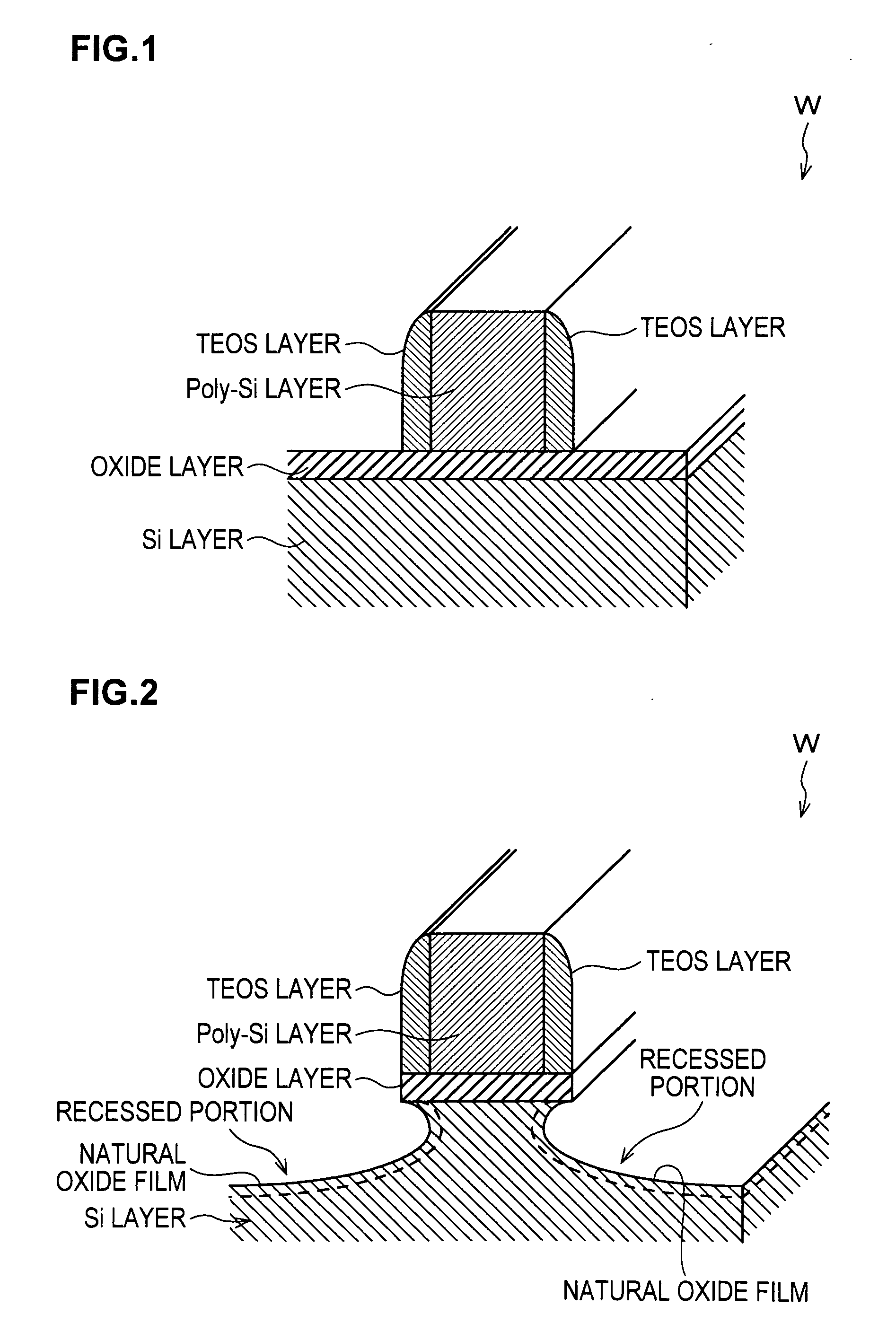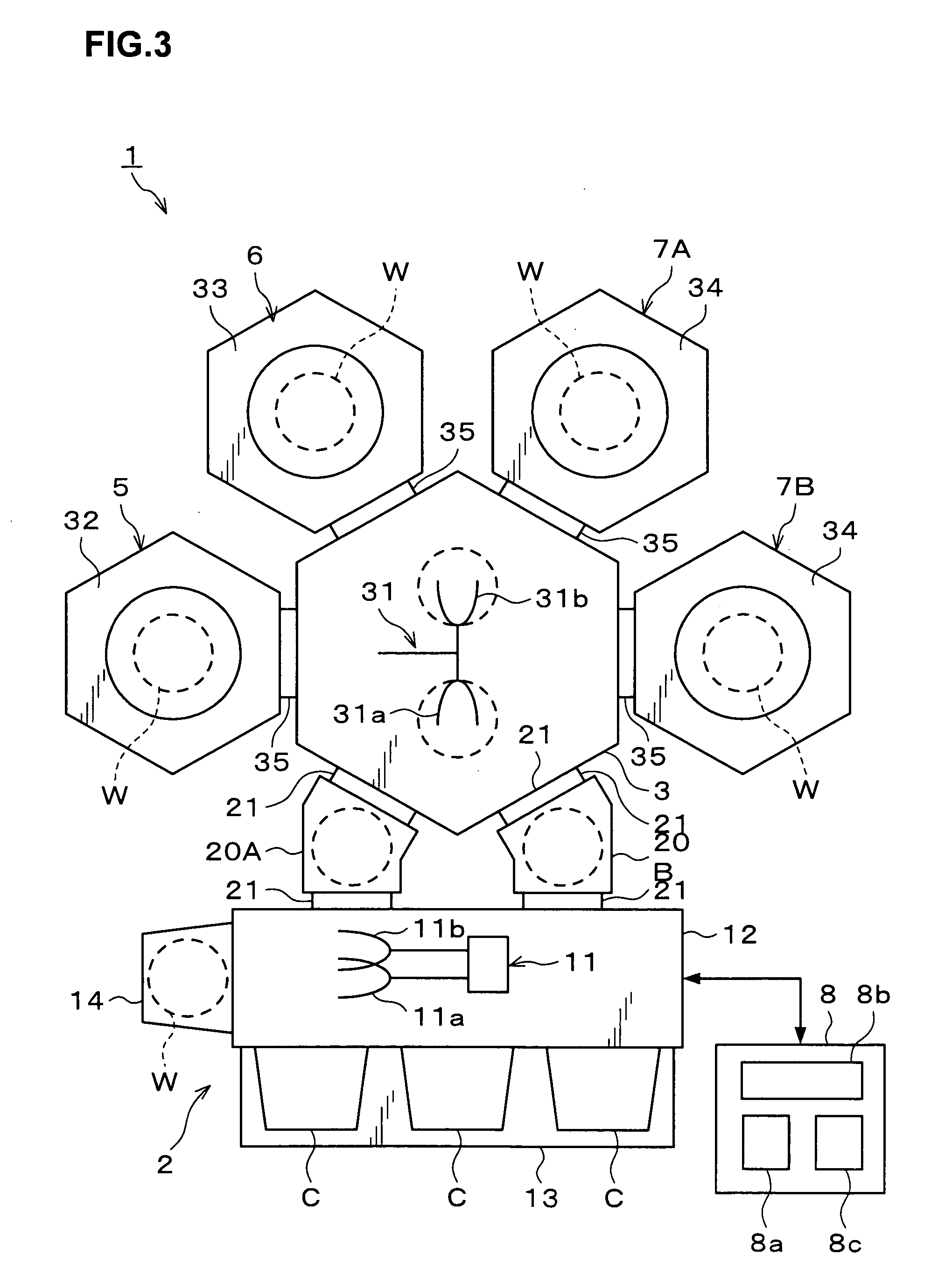Processing Method and Recording Medium
- Summary
- Abstract
- Description
- Claims
- Application Information
AI Technical Summary
Benefits of technology
Problems solved by technology
Method used
Image
Examples
example
[0078]The present inventors studied selection ratios as removal amounts regarding various materials used in the manufacture of a semiconductor device when the dry cleaning (etching) including the COR process and the PHT process was performed. FIG. 13 is a graph showing the result of the study. The selection ratio was obtained as a ratio relative to a removal amount of a thermal oxide film (Thermal-Ox) which is defined as 1. The selection ratios of the following six kinds of materials were studied: a polysilazane oxide film (PSZ-SiO2), a thermal CVD oxide film (Thermal-TEOS), a HTO film (Single-HTO), a plasma silicon nitride (plasma-SiN), a thermal CVD nitride film (Thermal-SiN), polysilicon (Poly-Si). As a result, the selection ratios were all 1 or lower. Therefore, it was confirmed that any of the materials is more difficult to chemically react in the COR process than the thermal oxide film (Thermal-Ox) and is not easily damaged by the dry cleaning. That is, it was confirmed that t...
PUM
 Login to View More
Login to View More Abstract
Description
Claims
Application Information
 Login to View More
Login to View More - R&D
- Intellectual Property
- Life Sciences
- Materials
- Tech Scout
- Unparalleled Data Quality
- Higher Quality Content
- 60% Fewer Hallucinations
Browse by: Latest US Patents, China's latest patents, Technical Efficacy Thesaurus, Application Domain, Technology Topic, Popular Technical Reports.
© 2025 PatSnap. All rights reserved.Legal|Privacy policy|Modern Slavery Act Transparency Statement|Sitemap|About US| Contact US: help@patsnap.com



